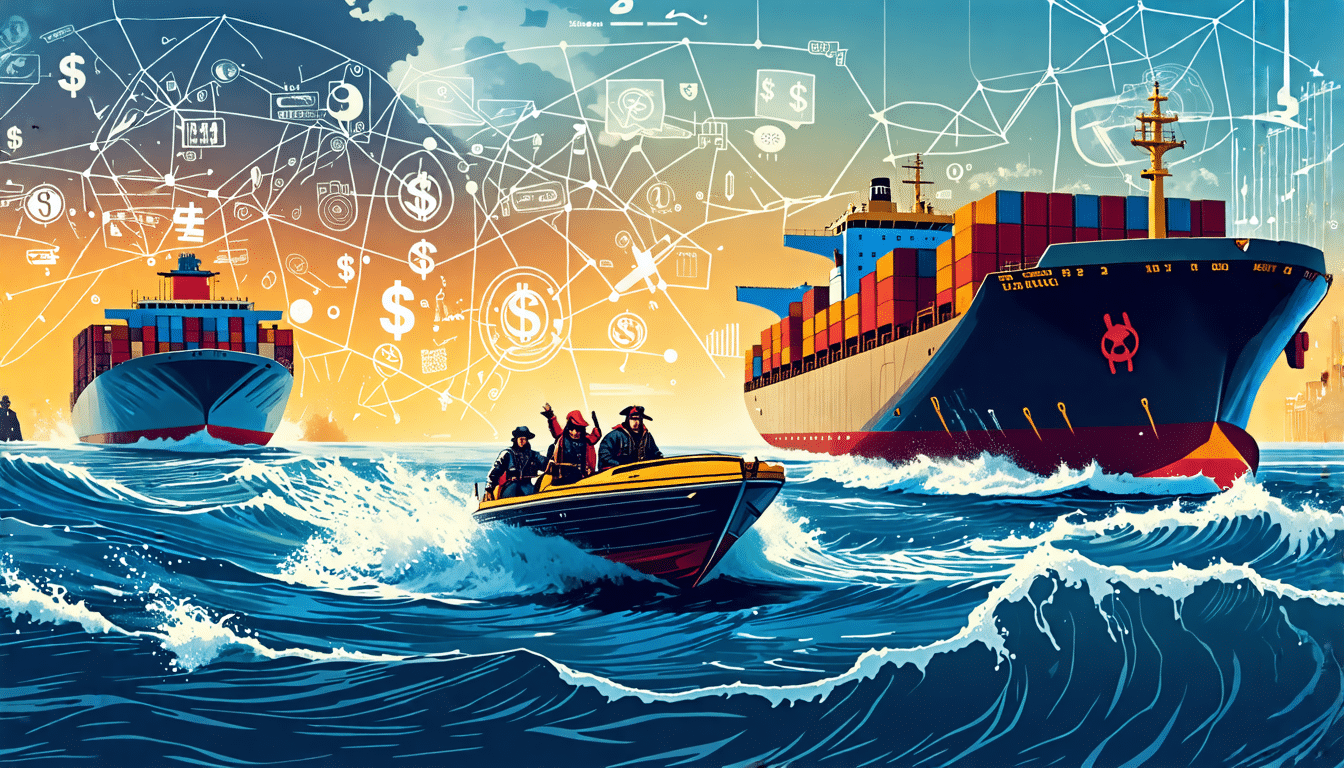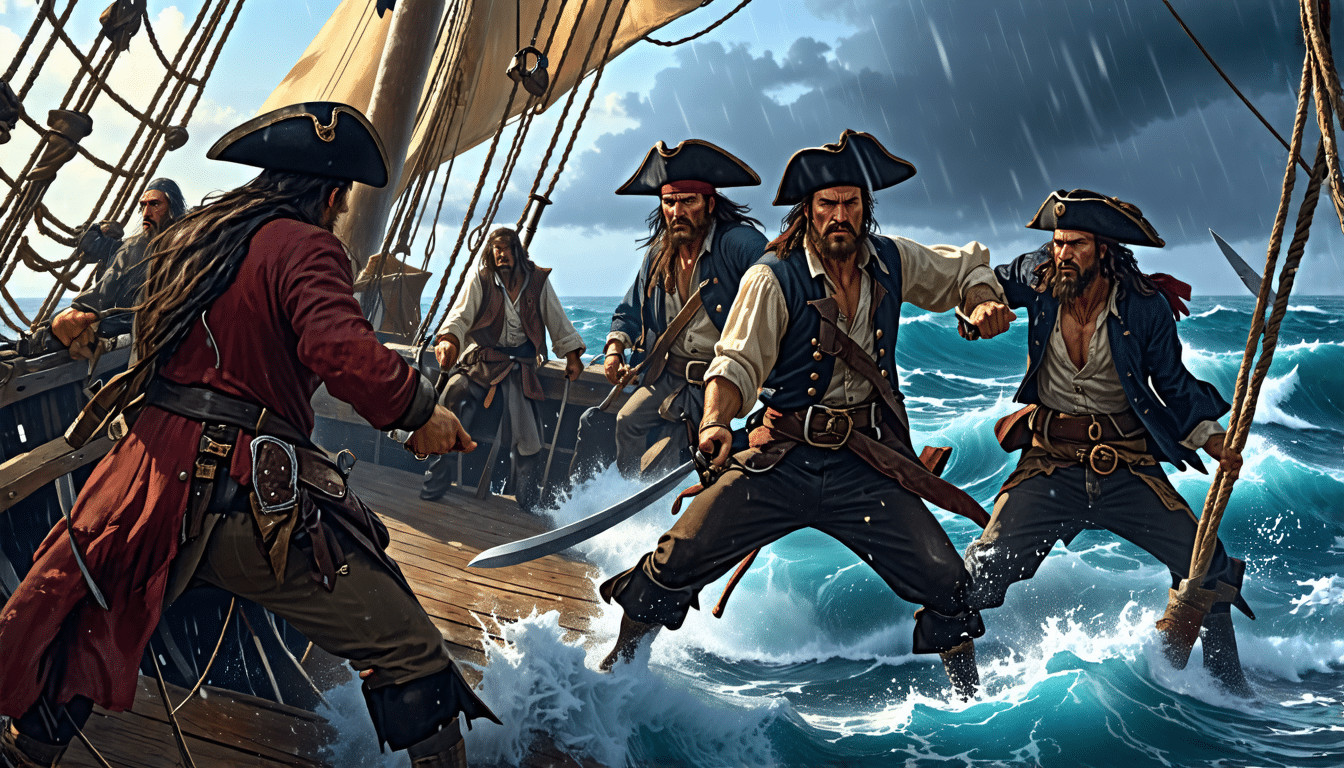Maritime piracy, far from being a relic of the past, remains a significant threat in international waters, driven principally by strong financial incentives. Understanding the economic motivations behind maritime crime is crucial to addressing this persistent issue. Economic disparities, lack of legitimate employment opportunities, and the lure of potentially substantial financial rewards push individuals in economically distressed regions to risk their lives and freedom by engaging in piracy. The comparison of potential earnings from successful hijackings against the risks of capture and punishment often tilts in favor of taking the gamble, especially in areas where law enforcement is weak or corrupt.
The thriving nature of piracy in these regions underscores the pressing economic challenges they face. For instance, in many parts of East Africa, the lack of economic stability and limited access to sustainable livelihoods have made piracy an enticing avenue for financial gain. Similarly, the Gulf of Guinea, plagued by unemployment and poverty, has seen a surge in piracy incidents, driven by economic desperation and the promise of lucrative returns from ransom payments and stolen goods.
On a broader scale, maritime piracy exerts considerable pressure on global trade and shipping economics. The direct costs of piracy, such as ransom payments, loss of goods, and damage to vessels, are compounded by indirect costs like increased insurance premiums and the necessity for heightened security measures. Shipping companies are compelled to invest heavily in protective measures, ranging from armed guards to advanced tracking technologies, which in turn bump up operational costs. These expenses inevitably trickle down to consumers, leading to higher prices for goods and commodities around the world.
To counteract the economic strain caused by piracy, global trade networks are adopting multi-faceted strategies. These include rerouting shipping lanes away from high-risk areas, implementing international naval patrols, and fostering economic development in pirate-prone regions to address the root causes of piracy. By understanding the financial drivers behind maritime piracy and its economic impact on global trade, stakeholders can develop more effective policies and interventions to safeguard the seas and ensure the smooth flow of international commerce.
Understanding the Financial Incentives Behind Maritime Piracy
Exploring the Economic Conditions That Lead Individuals to Engage in Piracy
The phenomenon of maritime piracy can often be traced back to dire economic conditions. In many coastal regions, where economic instability and unemployment are rampant, individuals may find themselves driven to piracy as a desperate means of survival. The lack of legitimate opportunities makes the high-risk, high-reward nature of piracy more appealing.
These regions typically suffer from poor infrastructure, limited access to education, and minimal industrial activities, leading to a scarcity of jobs. In places like Somalia, where the government’s control is weak, piracy has become an alternative economy. Poverty, lack of state control, and absence of effective law enforcement create an environment where piracy can flourish.
Moreover, in some coastal communities, piracy has become culturally embedded due to generational poverty, where younger individuals follow in the footsteps of elders who turned to piracy out of necessity. The collapse of traditional industries, such as fishing due to overfishing by foreign fleets, has exacerbated the situation, pushing local fishermen towards piracy to sustain their livelihoods.
Analyzing the Potential Earnings Versus Risks for Pirates: Financial Rewards Outweigh Consequences
Understanding the financial calculus behind piracy requires comparing the potential earnings against the risks involved. One of the critical incentives for piracy is the financial gain, which can be substantial. Pirates often target vessels carrying valuable cargo, and ransom payments for crew members can run into millions of dollars. For instance, the average ransom payment for a hijacked vessel can range from $500,000 to $5 million, depending on the ship’s value, the cargo, and the crew’s nationality.
While the risks, including severe legal penalties and the possibility of violent confrontations with naval forces, are significant, many pirates deem the potential financial rewards worth these dangers. Successful pirates can dramatically improve their standard of living, afford better housing, education for their children, and even reinvest their earnings into more sophisticated piracy operations.
The disparity between the median income levels in piracy-prone regions and the potential earnings from a single successful piracy operation is stark. For example, in Somalia, the average annual income per capita hovers around $310, while a successful piracy mission can yield each participant tens of thousands of dollars. This massive disparity acts as a potent lure, drawing individuals to piracy despite the risks involved.
Case Studies of Economically Distressed Regions Where Piracy Thrives
To further understand the financial incentives behind maritime piracy, examining specific case studies of regions where piracy is most prevalent can be illuminating.
Somalia
Somalia, perhaps the most infamous hotspot for piracy, provides a clear example of how economic distress can lead to an upsurge in maritime crime. Decades of civil war, lawlessness, and economic turmoil have left many Somalis with few options for legitimate employment. The lucrative nature of piracy, despite its risks, offers a tantalizing alternative. Somali pirates have been known to invest in sophisticated technology and weapons, supported by a network of financers who benefit from the ransom payouts.
Nigeria
Nigeria, particularly in the oil-rich Niger Delta, represents another significant case study. The region’s wealth disparity, corruption, and inadequate distribution of oil revenues have fostered an environment ripe for piracy. Militants and pirates in the Gulf of Guinea engage in hijackings to steal oil cargo or hold crew members for ransom. The financial desperation of local communities, combined with the region’s strategic importance to global oil supply, makes piracy a financially attractive option.
Indonesia
Indonesia’s sprawling archipelago is another area where economic conditions contribute to maritime piracy. Although not as widely reported as Somalia, piracy around Indonesia has persisted due to the vast maritime territory and economic disparity. Inadequate law enforcement and the high volume of shipping traffic make it difficult to monitor and secure the waters effectively, providing opportunities for pirates to strike.
The financial incentives in these regions are further enhanced by weak regulatory frameworks, making piracy a relatively low-risk, high-reward endeavor. The profits pirates can make from hijacking ships, smuggling goods, and demanding ransoms far surpass the earnings from traditional fishing or menial labor available in these areas.
These case studies highlight that where economic hardship prevails, piracy can thrive as a means of financial survival and gain. Addressing these underlying economic issues is crucial in reducing the lure of piracy and promoting legal and sustainable livelihoods for affected communities.
https://www.virtualmaritime.academy/vma-courses/
Impact of Piracy on Global Trade and Shipping Economics
Maritime piracy poses a significant threat to global trade and the wider shipping economy. The direct and indirect costs associated with piracy create a ripple effect that impacts every link in the supply chain. Understanding these economic repercussions is crucial for stakeholders within the global trade network.
Direct and Indirect Costs of Maritime Piracy on Global Shipping and Trade
Pirate attacks lead to direct costs such as ransom payments, ship damage, lost cargo, and crew expenses. These immediate outlays can be staggering. For instance, ransom demands can escalate into millions of dollars, while repairing ship damage and replacing stolen or destroyed cargos add to the financial burden. According to the Oceans Beyond Piracy project, the total cost of Somali piracy alone was estimated to be around $7 billion annually at its peak.
Indirect costs, although less visible, are even more pervasive. Disruption of shipping schedules leads to delayed deliveries, which can incur penalties and result in loss of business opportunities. Moreover, piracy hotspots force shipping routes to be altered, often resulting in longer voyages and, subsequently, higher fuel costs and increased wear and tear on vessels. The International Maritime Bureau (IMB) reports that some shipping companies spend up to 30% more on fuel to avoid high-risk areas, which underscores piracy’s extensive impact on operational costs.
Increased Piracy Insurance and Security Measures
As piracy threats persist, the cost of maritime insurance skyrockets. Shipping companies must pay a premium for piracy-specific insurance coverage, adding significantly to their overheads. The rise in insurance costs reflects the increased risk of shipping through perilous waters. In turn, these heightened insurance premiums are often passed on to consumers, further inflating the costs of traded goods.
Besides insurance, there is a notable escalation in investments toward enhanced security measures. Shipping lines now routinely employ armed security personnel to protect their vessels. These measures include the installation of advanced surveillance systems, deployment of razor wires, and use of evasive sailing techniques. For example, shipping giant Maersk reported millions of dollars in annual security costs to safeguard their fleet from potential pirate attacks. These expenditures, though necessary, mark a considerable financial strain on the industry.
Strategies to Mitigate the Economic Impact of Piracy
Global trade networks have developed several strategies aimed at reducing the economic toll of piracy. One common strategy is the implementation of Best Management Practices (BMP), which provide guidelines for ships to evade, deter, and delay pirate attacks. BMP suggestions include maintaining a high speed through risky regions, using long-range acoustical devices to warn off potential attackers, and coordinating closely with naval patrol vessels.
On a larger scale, international coalitions work together to provide maritime security. Naval forces from multiple countries, through operations like the EU’s Operation Atalanta and NATO’s Operation Ocean Shield, conduct patrols and escort ships through high-risk areas. These operations have proved effective in deterring pirate activities and ensuring safe passage for commercial vessels, indirectly stabilizing shipping costs.
Additionally, diplomatic efforts to stabilize and develop pirate-prone regions aim to tackle the root causes of piracy. By investing in local economies, these initiatives seek to provide alternative livelihoods. The UN and NGOs have launched community programs to bolster local governance, improve education, and offer vocational training, reducing the economic desperation that often drives individuals towards piracy.
Technological advancements also play a key role in combating piracy. Automated threat detection systems, coupled with real-time satellite tracking and data analytics, enable shipping companies to stay ahead of potential pirate encounters. Innovations such as drones for surveillance and communication improvements streamline pirate detection and reporting, minimizing risk and associated costs.
In conclusion, maritime piracy inflicts significant financial strain on global trade and shipping economics. The combined weight of direct and indirect costs, increased insurance and security expenditures, poses a formidable challenge. However, through a combination of strategic practices, international cooperation, and technological innovation, the shipping industry continues to navigate and mitigate these economic impacts.
Maritime piracy, driven by profound financial incentives, poses significant challenges and costs to global trade and shipping economics. The intricate interplay between economic hardship and crime highlights how individuals in distressed regions, often facing limited legitimate economic opportunities, turn to piracy as a means of substantial financial gain. The promise of sizeable, albeit illicit, earnings often eclipses the associated risks, perpetuating cycles of criminal activity in these areas. Case studies from various regions underline how poverty and economic desperation can fuel the pirate economy, despite the formidable dangers involved.
The repercussions of this maritime crime resonate far beyond the pirates’ immediate vicinity, reverberating through global trade networks. The direct impact on shipping companies can be severe, including the burden of hefty ransoms, losses of goods, and vessel damages. Moreover, the indirect costs – escalating insurance premiums, increased security expenditures, and rerouting of ships to avoid piracy hotspots – collectively inflate operational expenses for shipping businesses. These costs inevitably ripple down to consumers, influencing global market prices.
In response, the shipping and trade industries continually adapt, seeking strategies to curtail the economic damage caused by piracy. Enhanced security protocols, such as on-board armed guards and international naval patrols, represent immediate countermeasures, albeit at a steep cost. Additionally, long-term solutions involve fostering economic development in piracy-prone regions to mitigate the root causes driving individuals towards such illicit activities. Multifaceted approaches involving international cooperation and economic aid are essential in addressing both the symptoms and the underlying catalysts of maritime piracy.
Ultimately, understanding the economic motives behind piracy sheds light on its persistence and the extensive measures required to combat it. As global commerce remains vulnerable to these persistent threats, ongoing efforts are crucial to safeguard maritime routes and sustain the fluidity of international trade.





